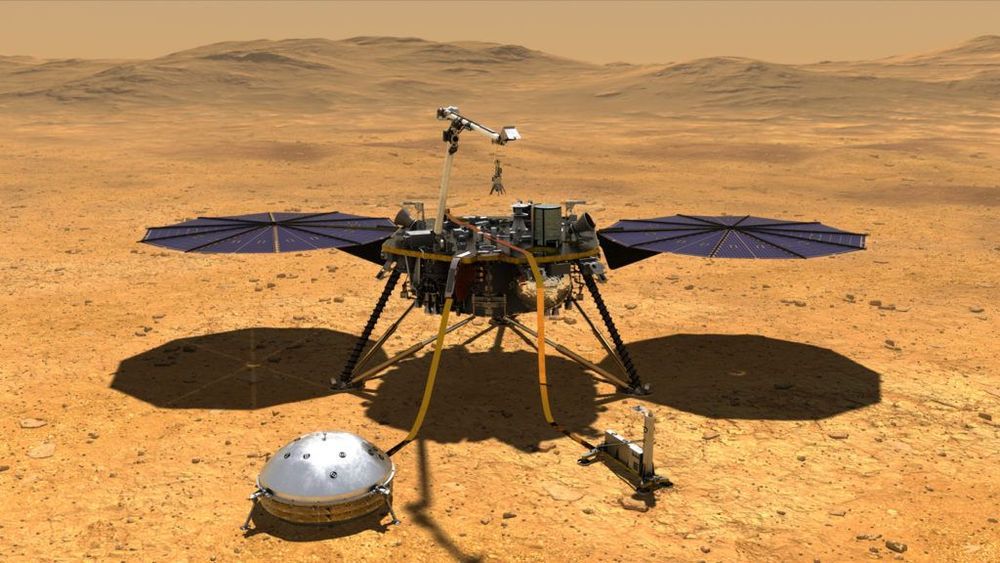“The people I see being the most wrong about AI are the ones who are very smart,” Tesla CEO Elon Musk said on Wednesday.
The magnetic properties of a chromium halide can be tuned by manipulating the non-magnetic atoms in the material, a team, led by Boston College researchers, reports in the most recent edition of Science Advances.
The seemingly counter-intuitive method is based on a mechanism known as an indirect exchange interaction, according to Boston College Assistant Professor of Physics Fazel Tafti, a lead author of the report.
An indirect interaction is mediated between two magnetic atoms via a non-magnetic atom known as the ligand. The Tafti Lab findings show that by changing the composition of these ligand atoms, all the magnetic properties can be easily tuned.
“Strange metals” have that name for a reason – these materials exhibit some unusual conductive properties and surprisingly, even have things in common with black holes. Now, a new study has characterized them in more detail, and found that strange metals constitute a new state of matter.
So-called strange metals differ from regular metals because their electrical resistance is directly linked to temperature. Electrons in strange metals are seen to lose their energy as fast as the laws of quantum mechanics allow. But that’s not all – their conductivity is also linked to two fundamental constants of physics: Planck’s constant, which defines how much energy a photon can carry, and Boltzmann’s constant, which relates the kinetic energy of particles in a gas with the temperature of that gas.
While these properties have been well observed over the years, scientists have had a hard time accurately modeling strange metals. So in a new study, researchers from the Flatiron Institute and Cornell University set out to solve the model, right down to absolute zero – lower than the lowest possible temperature for materials.
The One Love Machine band are a scrappy crew. They have an affinity for punk rock, and members of the band play the bass, drums and flute. Oh, and they’re all robots. The band is made up of scrap metal animatronics, created from salvaged junk from scrapyards around Berlin. For creator of the band Kolja Kugler, it’s all about giving new life to discarded objects.
With much of the world planning to pivot away from oil and gas in the near future, the country’s government is looking ahead to a more diversified energy sector. The international ‘green’ trend is a significant threat to the Russian economy, which is at present largely dependent on the export of oil, gas, and coal. Starting from 2021, the government intends to build on the country’s reputation as a hydrogen supplier, aiming to make exports of the world’s most abundant gas a large part of its energy sector.
Hurricane Douglas is forecast to sweep through Hawaii as a tropical storm or hurricane this weekend, where it could produce flash flooding, strong winds and pounding surf.
The Central Pacific Hurricane Center has issued a hurricane watch for Oahu in addition to the Big Island of Hawaii and for Maui County, including Maui, Lanai, Molokai and Kahoolawe. Hurricane conditions are possible in this area Saturday night into Sunday, with tropical storm conditions possible as soon as Saturday evening.
After peaking at Category 4 intensity, Douglas is now slowly weakening as it churns several hundred miles east-southeast of Hilo, Hawaii, moving quickly west-northwest.
Light into matter
Posted in futurism
Circa 2014
Oliver Pike explains to Nature Photon ics that the so far elusive electron–positron pair production from light may now be possible using existing technology.
Antimatter drive propulsion to Mars in 300 days.
Mars is the most habitable planet in the Solar System after Earth. But how long does it take to get to Mars? Depending on the technology, the red planet’s position, and some other things, somewhere between 150 to 300 days.
Once every two years or so, Mars and Earth reach their closest points, with the red planet being as close as 55 million kilometers / 34 million miles.
Many space agencies have taken advantage of this orbital alignment and sent many spacecraft to Mars. The journey usually takes between 150 to 300 days, depending on the speed of the launch, the alignment, and the length of the trip.
The current world population of 7.6 billion is expected to reach 8.6 billion in 2030, 9.8 billion in 2050 and 11.2 billion in 2100, according to a new United Nations report being launched today. With roughly 83 million people being added to the world’s population every year, the upward trend in population size is expected to continue, even assuming that fertility levels will continue to decline.
The World Population Prospects: The 2017 Revision, published by the UN Department of Economic and Social Affairs, provides a comprehensive review of global demographic trends and prospects for the future. The information is essential to guide policies aimed at achieving the new Sustainable Development Goals.









